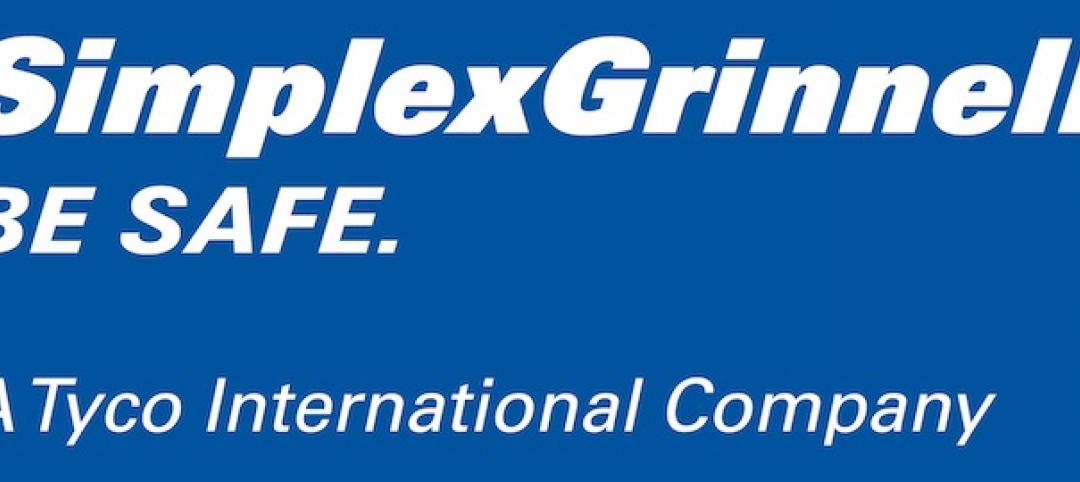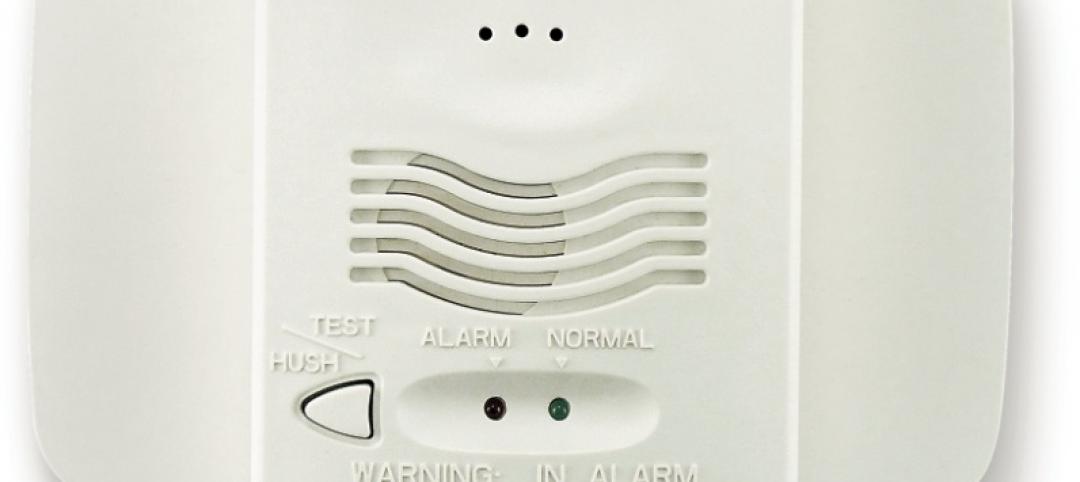To a large degree, building security is driven by the integration of a variety of electronic security systems. The market and engineering of these systems exploded in the post-9/11 era and has shown few signs of tapering off. “Rapid advances in technology and government directives are driving purchase decisions, especially in the replacement of legacy systems,” says the Security Industry Association in a recent report.
One challenge has been that security technology began to outpace the knowledge of many Building Teams. Their most daunting question: whether to adopt the latest and best technology, or to invest in a reasonably reliable, less expensive system that has a positive track record. The response by leading design and construction experts has been to plan ahead and work with system integrators for the facility being developed.
For large commercial and multifamily projects, Building Teams typically focus on three types of systems: 1) access control, 2) intrusion detection, and 3) visual surveillance.
Access control. Two electronic access technologies are at the forefront: biometrics and radio frequency identification (RFID). Of the two, RFID is the more commonplace: even less secure facilities may invest in simple ID tags with stored electronic information, such as public parking garages. RFID systems are widely available, and the tags and cards are essentially disposable.
The downside of most RFID technology is the ease of access to the stored information on the card. Smart cards, by contrast, constructed with an embedded chip, can be made highly secure and difficult to forge, duplicate, or hack, which allows for the safe storage of personal and sensitive information on the card. Though the smart card can be operated by proximity reading like an RFID tag to allow secure access to stored data or physical access to a secure area, smart card systems are more expensive than their chipless counterparts.
A recent trend in the industry is to consider the use of biometrics––identification through the scan of the occupant’s fingerprint, retina, or similarly unique biophysical aspect––in tandem with RFID, rather than as an alternative.
Two types of hybrid systems are currently in use: one with biometric and RFID systems independent of one another (essentially a redundancy system), and others that integrate the RFID and biometric systems natively. One of the first such systems employed a processor chip that required a positive fingerprint ID before releasing access to the information stored in the RFID tag.
Whether integrated or not, combining RFID and biometrics is currently seen as offering the highest levels of security.
Intrusion detection. According to the Security Industry Association report, 75% of those interviewed reported that their facilities were equipped with intrusion- and fire-detection systems. Of those without such systems, about 66% reported that they would need such a system within five years, and about half said they would have one installed within five years.
Apart from the fact that a majority of facilities use or will use electronic intrusion-detection and alarm systems, the market is otherwise divided on the types of systems to employ, and whether to integrate detection with other electronic systems.
Because there is always the possibility of false alarms, planning should include consideration of integrating intrusion detection with video surveillance or some other system for verification. This is especially important if the detection system is wired to alert police (or fire) response directly. According to the same SIA report, “Many communities are adopting ‘no-response’ policies to false alarms if they are not verified by audio, video, or eyewitnesses.”
Video surveillance. The technology behind a system of security cameras is an important decision that receives plenty of discussion during project planning. Closed-circuit television (CCTV) analog cameras recording onto a DVR may seem adequate until cost-benefit questions and systems integration issues arise. Analog signals can be encoded to digital, but the analog camera’s resolution will limit the recording’s quality, according to Sean A. Ahrens, Global Leader for Aon Fire Protection Engineering’s security consulting practice, who sits on standards-setting panels for both SIA and UL. Enhancement of an encoded digital image is much more difficult than that of direct digital.
Digital cameras are also preferred today because they are relatively inexpensive, even with high megapixel capture. The downside is the growing need for data storage, but that can be mitigated through programming to record only when the system detects a change from a reference frame. Especially useful in low-traffic environments, this aspect of direct digital technology offers flexibility for data storage requirements.
What’s more, this aspect dovetails with security integration schemes. The intrusion detection system that requires video verification to alert authorities can depend upon the digital camera to register any change in its recording field. High-megapixel cameras can also be integrated as a biometric access control, using facial recognition software.
Ahrens also points out that data storage concerns associated with direct digital are being addressed within the IT industry, through programs to encode and decode digital signals, called codecs. A new codec called H.264 requires substantially less data storage, about half that of MPEG-2, while enhancing video performance compared to what is currently available, or MPEG-4, says Ahrens. “Anyone considering the procurement of a digital recording solution should ensure that it is capable of running H.264 and other future and more robust codecs,” he says.
His advice: Be proactive now, and you will be able to garner future benefits. +
Related Stories
| Dec 5, 2013
Exclusive BD+C survey shows reaction to Sandy Hook tragedy
More than 60% of AEC professionals surveyed by BD+C said their firms experienced heightened interest in security measures from school districts they worked with.
| Nov 14, 2013
Tyco acquires Westfire Inc.
US Operations of Global Acquisition Strengthen Tyco SimplexGrinnell’s Special Hazards Fire Protection Capabilities for Mining, Telecommunications and Energy Markets
| Oct 27, 2013
SimplexGrinnell Awarded Contract by National Joint Powers Alliance for Streamlined Procurement of Fire and Life-Safety Solutions
Agreement Provides 50,000 Public Entities with Simplified Access to Comprehensive Suite of Products and Services
| Sep 9, 2013
Top 25 continuing education courses on BDCuniversity
An overview of the 25 most popular continuing education courses on BDCuniversity.com.
| Aug 23, 2013
The Exploratorium’s tall order
The newly-opened Exploratorium has brought energy and excitement to the city’s bustling waterfront. EHDD transformed the historic Pier 15, built in 1915, to a 330,000 square foot indoor and outdoor campus, being touted as the largest net-zero building in the city and potentially the largest net-zero museum in the world.
| Aug 22, 2013
New CO-PLATE makes revenue generation through CO detector replacement easier
With the first round of system-connected carbon monoxide (CO) detectors reaching their end of life, there’s a big opportunity for dealers and installers to increase their revenue streams through CO detector replacements. System Sensor has launched a new CO-PLATE Carbon Monoxide Detector Plate to coincide with this opportunity.
| Jul 12, 2013
Statue of Liberty Monument bolstered by Vetrotech Saint-Gobain’s fire-rated glass
The Statue of Liberty National Monument reopened to the public featuring two new fire stairwells and an elevator that will allow visitors with reduced mobility to look into the Statue’s interior structure.
High-rise Construction | Jul 9, 2013
5 innovations in high-rise building design
KONE's carbon-fiber hoisting technology and the Broad Group's prefab construction process are among the breakthroughs named 2013 Innovation Award winners by the Council on Tall Buildings and Urban Habitat.
| Jun 4, 2013
Notification reinvented: SimplexGrinnell introduces revolutionary family of intelligent notification appliances
Simplex TrueAlert ES uses addressable technology to improve protection, simplify installation and reduce operating costs.
| May 6, 2013
SAFTI FIRST announces 3D Autodesk Revit models for fire rated wall, window, and door systems
SAFTI FIRST, leading USA-manufacturer of fire rated glass and faming systems, is proud to announce that Autodesk Revit models are now available for its fire rated walls, window and door systems via www.safti.com and Autodesk Seek.














